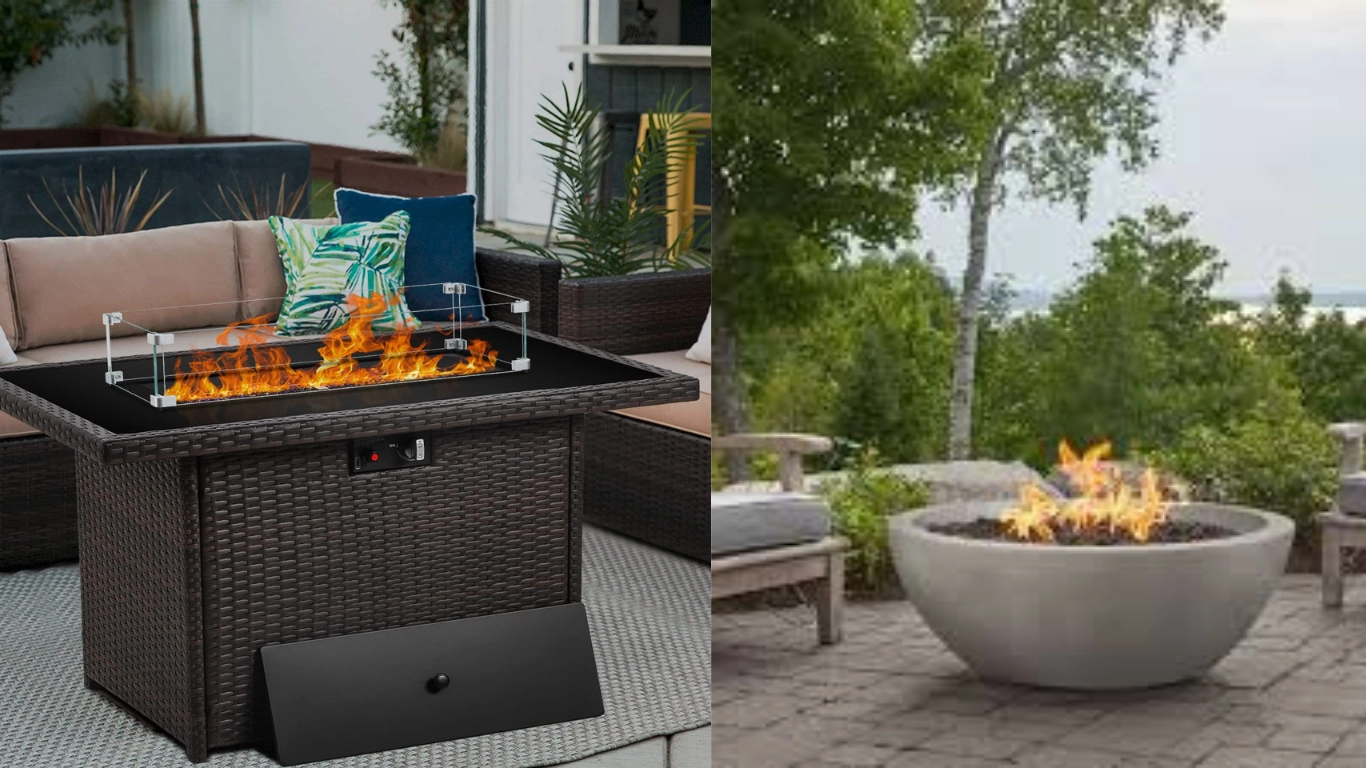If you are thinking of adding a fire table to your outdoor space, you might wonder what sets propane and natural gas fire tables apart. The main difference is that propane fire tables use portable tanks and offer flexible placement, while natural gas fire tables are connected to a gas line and stay in one spot, giving a steady fuel supply. This choice can affect everything from how you use the fire table to your long-term costs.
Both types of fire tables provide consistent heat and easy operation, but each fuel has its own pros and cons. Propane is great if you want to move your table around, while natural gas usually costs less to run in the long term but requires professional installation. If you are interested in seeing different options, you can check out Majestic fire tables for a wide range of styles that use both fuel types.
Thinking through which fuel type fits your needs can make your gatherings more enjoyable and convenient. Whether you want portability or a permanent backyard feature, the right fire table can help you create warm and memorable moments outside.
Key Differences Between Propane and Natural Gas Fire Tables
Propane and natural gas fire tables work in similar ways but have several key differences that can impact your experience. The choice affects the fuel type, how you set up your fire table, and daily use.
Fuel Composition and Sourcing
Propane is a byproduct of natural gas processing and petroleum refining. It comes in liquid form and is usually stored in tanks that you need to purchase and refill. Propane is commonly used in areas where natural gas lines are not available.
Natural gas is delivered through pipelines directly to your home. This fuel is lighter than air and is often seen as more convenient for homes already connected to a gas line. Natural gas is also less expensive per unit of energy than propane in many regions.
Comparison Table
| Fuel Type | Source | Storage |
| Propane | Refined byproduct | Portable tanks |
| Natural Gas | Direct from the pipeline | No storage tank |
Burning Efficiency and Performance
Propane has a higher energy content per cubic foot than natural gas. This means you can often get a hotter flame from a propane fire table using less fuel. Propane fire tables may reach higher temperatures, which is useful if you want more heat from your fire table.
Natural gas burns a bit cooler but is often preferred for outdoor setups with fixed lines. Both fuels provide a steady and controllable flame. The difference in flame appearance or warmth is small for casual uses, but propane may offer slightly better performance for heating.
Both types of fuel burn cleanly, producing minimal smoke and reducing ash compared to wood-burning fire pits. This makes either option suitable for quick, clean outdoor enjoyment.
Installation and Connection Requirements
Propane fire tables are easy to set up because they use portable tanks. You can move them around your patio or yard. Connecting the tank usually takes only a few steps, and you can start using your fire table within minutes.
Natural gas fire tables, on the other hand, must be connected to a natural gas line. This requires a fixed installation, often done by a professional. You won’t need to buy or refill tanks, but your fire table will not be easily moved once installed.
Key Points:
- Propane tables offer portability and simple setup.
- Natural gas tables stay in one place but never run out of fuel as long as your home is connected to a gas line.
Considerations for Choosing the Right Fire Table
Choosing a fire table depends on what matters to you, from cost to how it affects the environment. You’ll also want to consider how much upkeep is needed and what steps you have to take to use it safely.
Cost Comparison and Budgeting
Propane fire tables usually mean an upfront cost for buying propane tanks. Tanks are easy to swap out but need to be replaced regularly. You pay more for propane per unit of energy, which can make it pricier to use often.
Natural gas fire tables connect to a gas line. Installing a gas line can cost more at the start. If you already have a line, setup is cheaper. Natural gas is normally less expensive in the long run. For people who use their fire table frequently, natural gas may keep monthly costs down.
Budget tips:
- Consider both set-up and per-use costs.
- Remember to factor in fuel delivery or refill charges.
- Think about how often you plan to use your fire table.
| Fuel Type | Upfront Cost | Ongoing Cost | Ideal For |
| Propane | Lower | Higher (fuel) | Occasional use |
| Natural Gas | Higher | Lower (fuel) | Frequent/heavy use |
Environmental Impact
Propane and natural gas both burn cleaner than wood, but there are still differences. Natural gas produces fewer greenhouse gases per unit than propane. It also doesn’t require transporting heavy tanks, which can cut down on pollution from delivery vehicles.
Propane is stored in tanks and is not as easy to spill as liquid fuels. Still, leaks, while rare, can release gas into the air. Natural gas leaks can also happen, but the lines are meant to stay sealed.
Natural gas comes from underground pipelines, while propane usage depends on refilled or delivered tanks. Both fuels are fossil fuels, but natural gas generally has a smaller impact on the planet.
Maintenance and Safety Needs
Propane fire tables need you to check the tank and lines for leaks regularly. You will also need space to store propane tanks, and you should never store them indoors. Replacing empty tanks is easy, but you need to keep an eye on the fuel level.
Natural gas fire tables need the gas line and connections checked for leaks. Professional installation is usually needed, and moving the table later can be hard. However, there are no tanks to refill, so you have fewer chores over time.
Staying safe means making sure all connections are tight and there are no strong smells of gas. Always turn off the fuel if you won’t be using the fire table for a while, and follow the manufacturer’s safety instructions for both types.
Conclusion
When choosing between propane and natural gas fire tables, you are deciding between convenience and cost. Propane tanks give you more flexibility in where you place your table, while natural gas means you never have to change tanks.
Here’s a quick look at the main points:
| Feature | Propane | Natural Gas |
| Setup | Portable, easier | Stationery, needs a line |
| Ongoing Cost | Usually higher | Usually lower |
| Maintenance | Replace tanks | Less frequent action |
Think about how you want to use your fire table and what fits your space and budget best. Your choice will help you enjoy safe and warm outdoor gatherings.







